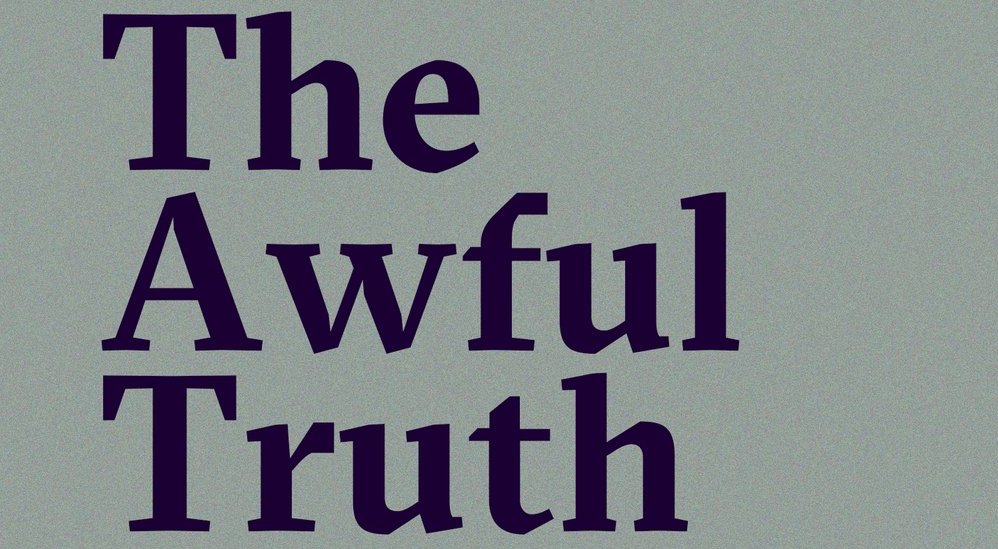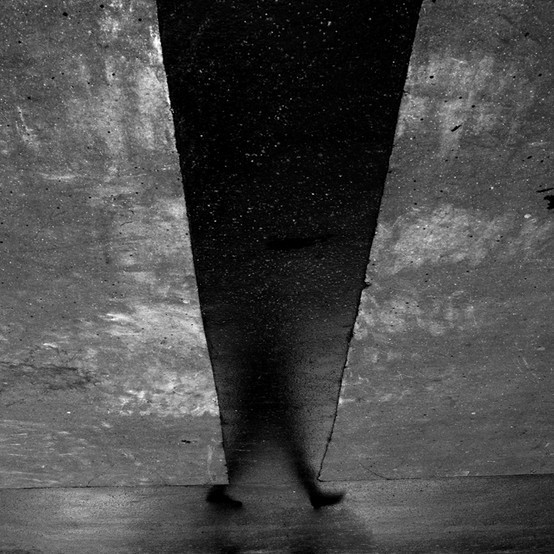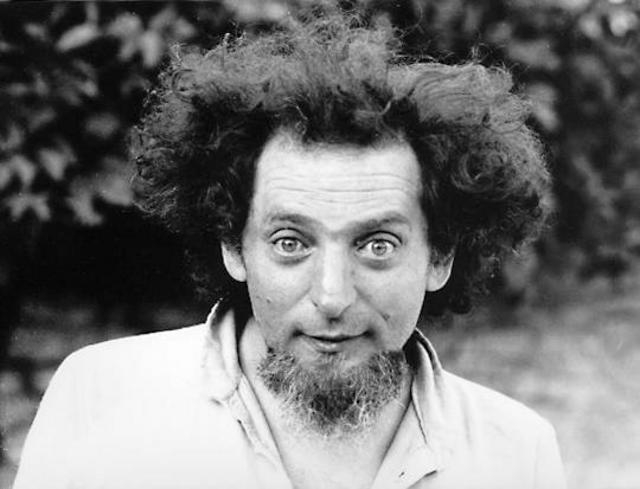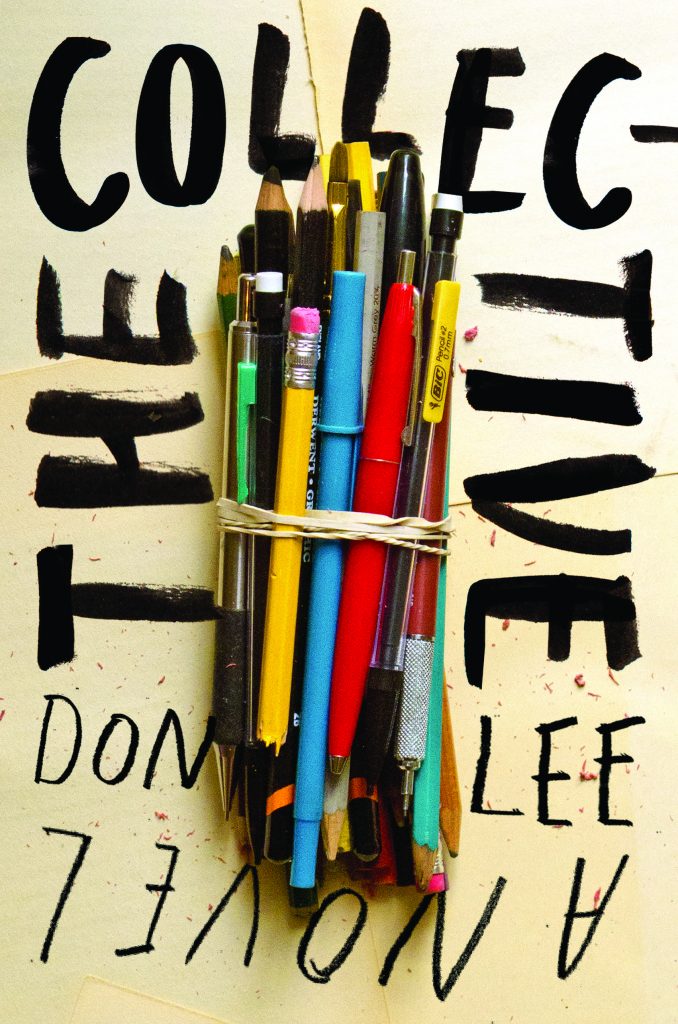I have dreams, and when I do, I don’t really recognize myself in them. Or rather, I don’t recognize selfness. The self, I think, is abstracted in dream. The dream is the self exercised simply as a kind of form, a kind of play. I want to pose this to you directly. I’ll tell you that I am trapped in a building and the only way out is composition, my composing the world until it matches a verisimilitude, the sorts of things we remember reading and watching and walking around in. Familiarity is a kind of mastery, and it is at this point we must raise the question of being free.
Freedom is a small point distant but otherwise distinctly in sight in Diana Hamilton’s The Awful Truth, an odd, if you will, text by an exacting poet and writer and published in a handsome, unassuming volume from Golias Books. In it the beginning of freedom is dream. The very, very beginning:
 Some say we shouldn’t describe our dreams.
Some say we shouldn’t describe our dreams.
I say: fuck that.
But saying “fuck that” won’t persuade anyone.
Instead, I’ll prove it with “research”
about dreams & wishes. Specifically, two:
the wish to write, the wish to feel better.
Here’s an annotated bibliography
on how, when we dream, we write: . . .
This is, in it’s deft way, a synopsis of everything that will concern this project: dreams, as I hope we have already established, but also persuasion, the impulse to write, wanting to feel better, research, bibliography, and fucking that. Research is especially important (as is “describe” — both with their decisive prefixes) to this work, which lives in this self, the writer, unmasked, who lives amid other writers, whose text lives amid other media. And both within dream, as in these dream notes about encountering the extraordinary poet Bernadette Mayer:
A lover was a book by me, I had written
him, but he was still man-sized and book-sized. He wanted me
to inscribe him to him, an act I’ve always hated,
and hate requesting. For this reason
I’ll only do it when it feels urgent: I saw
Bernadette Mayer in Oakland recently, and I couldn’t
help but ask her to sign my copy of Ethics of Sleep
because I love her more than all poets
who have ever existed and that was the book I had
just bought. I told her I loved her. She laughed
and asked for a sip of my beer. I gave her one
from my bag. One thing you might not now is that
Bernadette Mayer is the most beautiful human. She asked me:
“So you like my work. Should I keep writing?”
And the “proof” here I want to emphasize is not the content, as in the content of the dream or the notes of the dream or the book or the quote, but the form, dream as a form or a kind of activity, and this book as a kind of note-taking between that activity and life itself (and between life and cinema, as we will see later). The writing is very natural, or naturalistic. It is something like a diary, though for one it is certainly composed (see: the lineation) and for second and all thereafter it considers, in a deliberate way, like philosophy, in a way that is more sophisticated than mere exercise. But like a diary, Hamilton’s book plumbs the subconscious and confesses it, with a distinct aim of therapy, and so Freud figures into this both as a trigger and as an object of quarrel and critique:
Dreams are great at producing these little references to the fact that there’s something to be referenced. Freud leaves the “navel” of the dreams obscure because “it adds nothing to our knowledge of the content of the dream. The dream’s navel is the spot where it reaches down into the unknown.”. . . This quote is very frustrating, because, as the internet points out, Freud also says of the Wolf Man’s dream that “it is always a strict law of dream interpretation that an explanation must be found for every detail.” Regardless of which Freud you believe, which Barthes, which Hamilton, which food, the beauty of the dream is that it doesn’t need to furnish that explanation; it doesn’t experience writer’s block. The dream is so comforted by having chosen one you to address that it doesn’t need to worry over interpretation — it’s an act of love from the dream to Hamilton.
Exquisite, right? The dream has chosen you, and given you this act of love, which is itself. My god. So you see this isn’t a book of dreams, heavy with symbolism (sharp with structuralism), nor really a book about dreams, but of or about dreaming, as an action, a thing we do and then think about after, assess perhaps, for quality and purpose, for its puzzling irreducible (imperfectly analyzable) presence. And there is so much more: reading, dreams, analysis, and this search for, if I can use this term as neutrally as possible, well-being (both personal and public, both need and justice).
At least, that’s section one, which by the way is titled “Write in Your Sleep.” Section two is titled “Fear and Trembling,” and here the self and life and needs for wellness remain, but now the instrument is no longer dream or dream analysis but cinema (as I had mentioned). Hamilton is fairly direct in the project: where dreams are a form of writing, or active writing, cinema is a form of non-writing, or of predetermined writing, and this predetermination can provide, in fact, a kind of healing—it only requires matching one’s life (and concerns, obsessions, entrenchments, so on) to a specific film. Vis, with apologies for the ellipses:
If I could talk sense into my friends, I’d ask them to give up; I would tell them to enter the movies. With their lines written in advance, they would be freed from the anxiety of wordlessness—except where they were directed to express it—and freed too from the burden of getting over it. Take Joey, one of my oldest friends, a writer whose fantasies of control are even bigger than most poet’s. . . . By getting him to admit that all of his problems centered around his frustrated relationship with masculinity. . . . it didn’t take me long to identify exactly which film he should continuously relive, although it took much longer to convince him to stop writing. We deliberated one night over dinner and figured out it had to be Cary Grant’s role in His Girl Friday.
And as such section two variously elucidates the psychic underpinnings of specific films as they relate to the author’s friends — her therapeutic subjects — whom she guides along toward the discovery of their prewritten lives and, thereby, a truer, actually successful therapy in place of the failing one they have otherwise been attempting, namely, writing. Give up, she says, and the pessimistic resignation is definitely dark, but if you have guessed it, yes, it is also really funny, tongue-in-cheek, friendily jesting, and immensely readable in an almost magazine sort of way when the writer is especially in command of the sociality of the writing. Which is to say you really ought to just read this book because you will lose track of time in doing so.
Okay but so I want to make of this moment — as it completes a kind of triangulation — a special effort of focus and attention. It should be clear now that dreams and cinema are sort of polar horizons on either side of Hamilton’s theory of composition. The brilliance of her engagement with this simple structure is an honesty as to composition’s value, or at least, the ways we ordinarily conceive of its value. As I hope these few examples have demonstrated, composition as a practice is not automatically sanctified. It won’t necessarily free you. It is, in fact, a promise that maybe never delivers, a haunting, an obsession, indeed, a bondage. It seems to be the case that composition — via dreams and cinema — is both meaningless and over-meaning; it both gives us nothing and let’s us have nothing of our own. It is a form of nihilism.
But maybe there is a way to transcend through, as it were. This is the distinct takeaway I take from The Awful Truth. These repeating dream and cinema structures are a kind of hard fact of our psychic and social existence, but as such they are ours, and with them we make an effort toward something, maybe, toward mastery, self-sovereignty. And we do that by being good. I’m not exactly sure — this point might happily be a joke of impossibility — but I will be a believer. All throughout this book there is an orientation of care. It is in Hamilton’s own precise writing and effort toward the true (even if it is awful), but also her care for others and a powerful discipline that no matter our confusions about ourselves or the world, it is never unclear that we should always try to treat each other right. This “treating” is a kind of attentiveness, and one gathers a cumulative sense of attention — dreams and cinema both as forms of attention. The earnestness of this become apparent as one progresses, and so it seems that the author must develop this play of syncretic intertexts toward some ultimate exertion of attention, a composition that is finally allowed.
And so she ends by stepping her own writing aside and instead bringing us into “‘Silent Treatment,’ by Sophie” — a friend’s story that forms the foam or crystal or filigreed crown of the book. It is the most realized (longest, most developed) composition in the book. It is a story about dreams and silence and surveillance and the transformation of consciousness (and the body) when each of these is pushed to its unstable horizon:
“But, Sophie” — and the words were all she could handle; as they moved closer to dialogue, the image went away and was replaced only by the texture of voices. Then she saw the lights of his eyes go out, and she would have swished her tail, if she still had a body — “Isn’t there something we’re supposed to be doing here?”




